Collage art is a versatile and captivating form of artistic expression that thrives on experimentation with various materials. Different materials bring diverse textures and depths to a collage. When you incorporate fabric, textured paper, or found objects it introduces tactile elements that engage not just the eyes but also the sense of touch, creating a multi-dimensional experience. Using a variety of materials allows artists to create unique and original compositions. Try mixing unconventional items or textures that aren’t typically associated with art. This can set your work apart, making it distinctive and memorable! Each material carries its own history and context, by incorporating diverse materials, artists can weave stories and narratives into their collages. Using found objects or personal photographs, for instance, can add layers of meaning and emotion to the artwork. Elevate your collage game with these ten must-try materials that promise to enhance your creations and bring your artistic vision to life!
1. Assorted Papers and Textures
Gather an array of papers: vintage magazines, textured cardstock, handmade paper, or even old book pages. Mix and match textures and colors for depth and contrast in your collages.
2. Fabric Scraps
Explore the world of textiles by incorporating fabric scraps. From lace to denim and everything in between, these materials introduce unique textures and patterns to your artwork.
3. Found Objects
Venture beyond traditional materials by integrating found objects like buttons, keys, or natural elements such as leaves and feathers. These items add a touch of uniqueness to your collages.
4. Acrylic Paints
Experiment with acrylic paints to create backgrounds or add accents to your collages. They offer versatility in terms of color mixing and layering.
5. Washi Tape
Washi tape is not just for paper crafts; it’s a fantastic addition to collage art. Its varied patterns and easy application allow for precise detailing.
6. Photographs
Incorporate personal or printed photographs into your collages. They add a narrative element and sentimental value to your artwork.
7. Stamps and Ink Pads
Explore the world of stamping to create unique patterns or add intricate details to your collages using different ink colors and stamp designs.
8. Embellishments
Enhance your collages with embellishments like sequins, beads, or rhinestones for a touch of sparkle and dimension.
9. Gel Medium or Mod Podge
These adhesive mediums are essential for collage-making, helping you adhere various materials while also providing a protective layer.
10. Digital Elements
Combine traditional and digital art by incorporating digital elements like scanned images or digital drawings into your collage compositions.
Tips for Using These Materials:
- Experimentation is key; don’t be afraid to try unconventional combinations.
- Consider the theme or message you want to convey with your collage before selecting materials.
- Create a focal point by layering materials strategically.
- Invest time in organising and categorising your materials to streamline the creative process.
These ten materials open up a world of possibilities in the realm of collage art. Embrace experimentation and allow your creativity to flow freely. With these tools at your disposal, you’re equipped to craft stunning and expressive collage creations that captivate the eyes and minds of your audience.
To learn more about collage techniques and explore inspirational ideas, stay tuned to our blog for upcoming articles!

